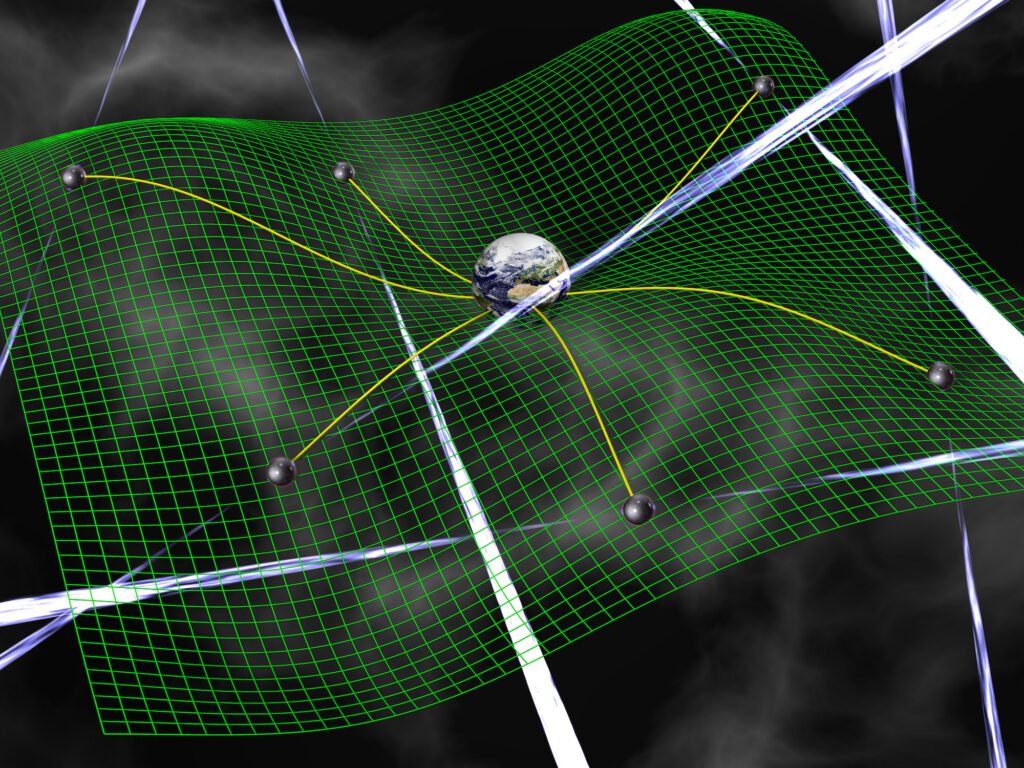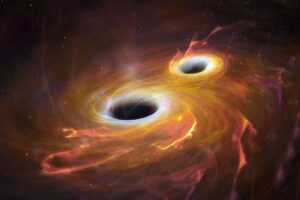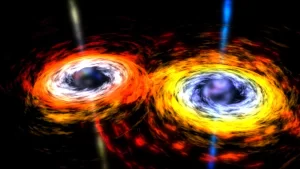Gravitational Waves Could Soon be Detectable by Existing Radio Telescopes

Gravitational Waves Could Soon be Detectable by Existing Radio Telescopes
The current detection of gravitational waves through the Laser Interferometer Gravitational-Wave Observatory (LIGO) got here from black holes, every approximately 30 instances the mass of our sun, merging into one. Gravitational waves span a huge variety of frequencies that require specific technology to discover.
“Detecting this sign is viable if we’re capable of display a sufficiently big wide variety of pulsars unfold throughout the sky,” stated Stephen Taylor, lead creator of the paper posted this week in The Astrophysical Journal Letters. He is a postdoctoral researcher at NASA’s Jet Propulsion Laboratory, Pasadena, California. “The smoking gun may be seeing the identical sample of deviations in all of them.” Taylor and associates at JPL and the California Institute of Technology in Pasadena had been reading the exceptional manner to apply pulsars to discover indicators from low-frequency gravitational waves. Pulsars are fairly magnetized neutron stars, the swiftly rotating cores of stars left at the back of while a large supermegacelebrity explodes as a supernova.
Einstein’s widespread idea of relativity predicts that gravitational waves — ripples in spacetime — emanate from accelerating large items. Nanohertz gravitational waves are emitted from pairs of supermassive black holes orbiting every different, every of which incorporate tens of thousands and thousands or 1000000000 instances greater mass than the ones detected through LIGO. These black holes every originated on the middle of separate galaxies that collided. They are slowly drawing nearer collectively and could in the end merge to create a unmarried super-sized black hollow.
As they orbit every different, the black holes pull at the cloth of area and create a faint sign that travels outward in all directions, like a vibration in a spider’s net. When this vibration passes Earth, it jostles our planet slightly, inflicting it to shift with admire to remote pulsars. Gravitational waves shaped through binary supermassive black holes take months or years to byskip Earth and require a few years of observations to discover.
“Galaxy mergers are common, and we assume there are numerous galaxies harboring binary supermassive black holes that we ought to be capable of discover,” stated Joseph Lazio, one in all Taylor’s co-authors, additionally primarily based totally at JPL. “Pulsars will permit us to peer those large items as they slowly spiral nearer collectively.”
Once those massive black holes get very near every different, the gravitational waves are too quick to discover the usage of pulsars. Space-primarily based totally laser interferometers like eLISA, a venture being evolved through the European Space Agency with NASA participation, could perform withinside the frequency band that may discover the signature of supermassive black holes merging. The LISA Pathfinder venture, which incorporates a stabilizing thruster machine controlled through JPL, is presently checking out technology important for the destiny eLISA venture.
Finding proof for supermassive black hollow binaries has been a undertaking for astronomers. The facilities of galaxies incorporate many stars, or even large black holes are pretty small — corresponding to the dimensions of our sun machine. Seeing seen signatures of those binaries amid the glare of the encompassing galaxy has been tough for astronomers.
Radio astronomers seek rather for the gravitational indicators from those binaries. In 2007, NANOGrav commenced watching a fixed of the fastest-rotating pulsars to try and discover tiny shifts due to gravitational waves.
Pulsars emit beams of radio waves, a number of which sweep throughout Earth as soon as each rotation. Astronomers discover this as a speedy pulse of radio emission. Most pulsars rotate numerous instances a second. But some, referred to as millisecond pulsars, rotate loads of instances faster.
“Millisecond pulsars have extraordinarily predictable arrival instances, and our gadgets are capable of degree them to inside a ten-millionth of a second,” stated Maura McLaughlin, a radio astronomer at West Virginia University in Morgantown and member of the NANOGrav group. “Because of that, we are able to use them to discover pretty small shifts in Earth’s position.”
But astrophysicists at JPL and Caltech warning that detecting faint gravitational waves could possibly require various pulsars. “We’re like a spider on the middle of a net,” stated Michele Vallisneri, any other member of the JPL/Caltech studies institution. “The greater strands we’ve in our net of pulsars, the much more likely we’re to experience while a gravitational wave passes through.”
Vallisneri stated carrying out this feat would require worldwide collaboration. “NANOGrav is presently tracking fifty four pulsars, however we are able to best see a number of the southern hemisphere. We will want to paintings carefully with our colleagues in Europe and Australia so that it will get the all-sky insurance this seek requires.”
The feasibility of this method become lately referred to as into query while a collection of Australian pulsar researchers mentioned that they had been not able to discover such indicators while reading a fixed of pulsars with the maximum particular timing measurements. After reading this result, the NANOGrav group decided that the mentioned non-detection become now no longer a surprise, and resulted from the mixture of positive gravitational wave fashions and evaluation of too few pulsars. Their one-web page reaction become launched lately through the arXiv digital print service.
Despite the technical challenges, Taylor is assured their group is at the proper track. “Gravitational waves are washing over Earth all of the time,” Taylor stated. “Given the wide variety of pulsars being located through NANOGrav and different worldwide teams, we anticipate to have clean and convincing proof of low-frequency gravitational waves withinside the subsequent decade.”
NANOGrav is a collaboration of over 60 scientists at greater than a dozen establishments withinside the United States and Canada. The institution makes use of radio pulsar timing observations obtained at NRAO’s Green Bank Telescope in West Virginia and at Arecibo Radio Observatory in Puerto Rico to look for ripples withinside the cloth of spacetime. In 2015, NANOGrav become awarded $14.five million through the National Science Foundation to create and perform a Physics Frontiers Center.
“With the current detection of gravitational waves through LIGO, the top notch paintings of the NANOGrav collaboration is especially applicable and timely,” stated Pedro Marronetti, National Science Foundation software director for gravitational wave studies. “This NSF-funded Physics Frontier Center is poised to supplement LIGO observations, extending the window of gravitational wave detection to very low frequencies.”
![Hubble Finds “Missing Link” Black Hole Tearing Apart a Star That Passed Too Close [Video]](https://aspiredworlds.com/wp-content/uploads/2022/07/Mid-Sized-Black-Hole-Eating-Star-scaled-1-300x169.jpg)






